Hello guest,
Thank you for subscribing to our newsletter! We hope you enjoy the second edition chronicling recent developments of our website.
In our previous newsletter, we discussed the
AutoCluster tool that can gather your DNA matches
into clusters of matches that most likely descend from common ancestors.
This second newsletter will discuss the AutoTree analysis for Ancestry and FamilyTreeDNA profiles.
AutoTree identifies common ancestors and reconstructs genealogical trees from AutoCluster clusters.
AutoTree works for persons with unknown parentage to
assist in identifying their birth families (for instance adoptees or donor-conceived persons).
 An example tree with shows three linked DNA matches displayed in red, using a color gradient.
In this example, the tested person (indicated in green) also shares a common ancestor with the Ancestry DNA matches.
An example tree with shows three linked DNA matches displayed in red, using a color gradient.
In this example, the tested person (indicated in green) also shares a common ancestor with the Ancestry DNA matches.
Here are the underlying principles of the AutoTree tool. First, AutoCluster organizes your DNA matches into shared match clusters that likely represent branches of your family.
Everyone in a cluster will likely be on the same ancestral line, although the MRCA between any of the matches and between you and any match may vary.
The generational level of the clusters may vary as well. One cluster may be your paternal grandmother's branch, while another may be your paternal grandfather's father's branch.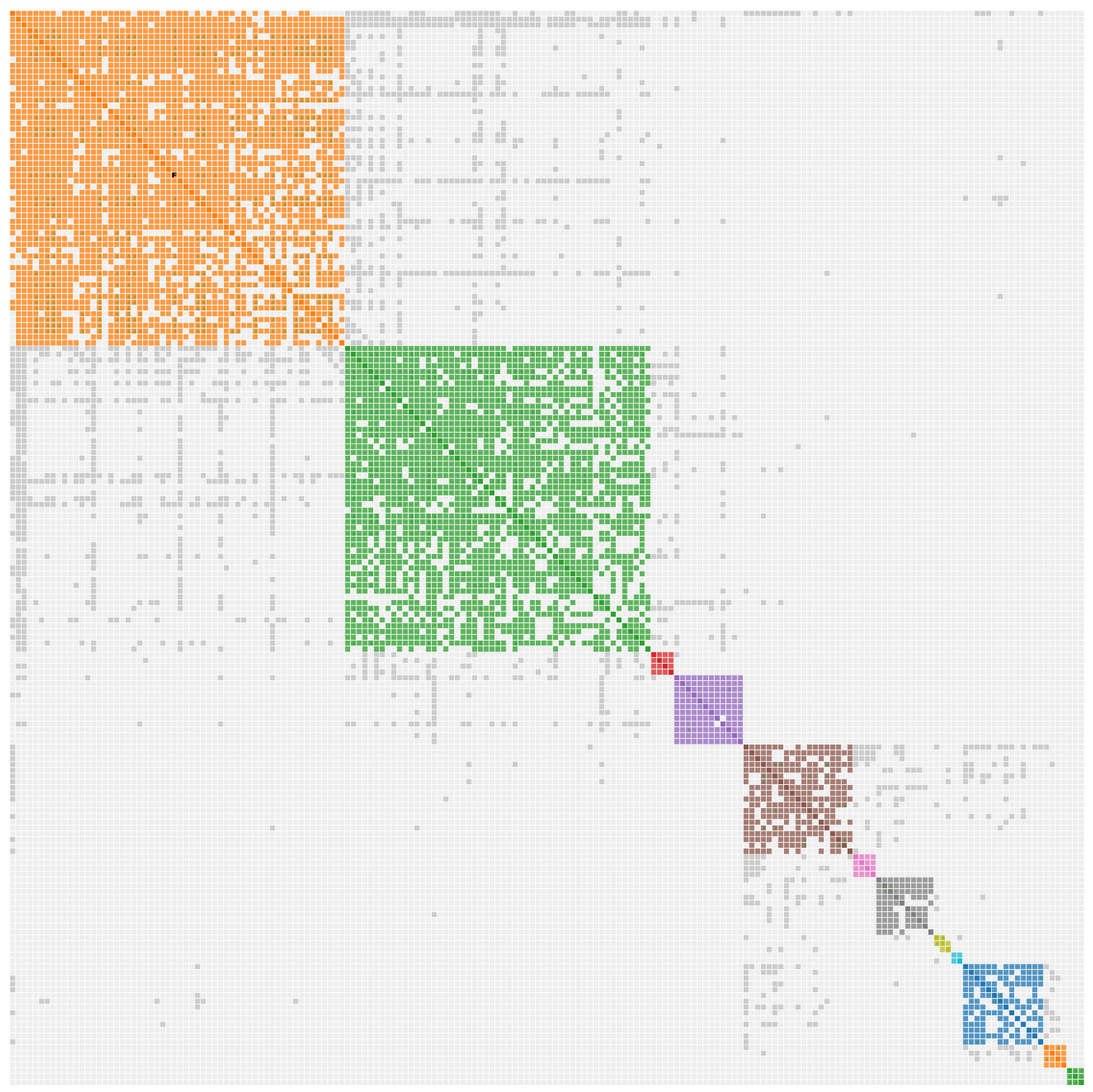 Example clusters from AutoCluster.
Example clusters from AutoCluster.
By comparing the trees from the members of a certain cluster, we can identify ancestors that are common among those trees.
First, we collect the surnames that are present in the trees and create a network using the similarity between surnames.
Next, we perform clustering on this network to identify clusters of similar surnames.
A similar clustering is performed based on a network using the first names of members of each surname cluster.
Our last clustering uses the birth and death years of members of a cluster to find similar persons.
As a consequence, initially large clusters (based on the surnames) are divided up into smaller clusters using the first name and birth/death year clustering.
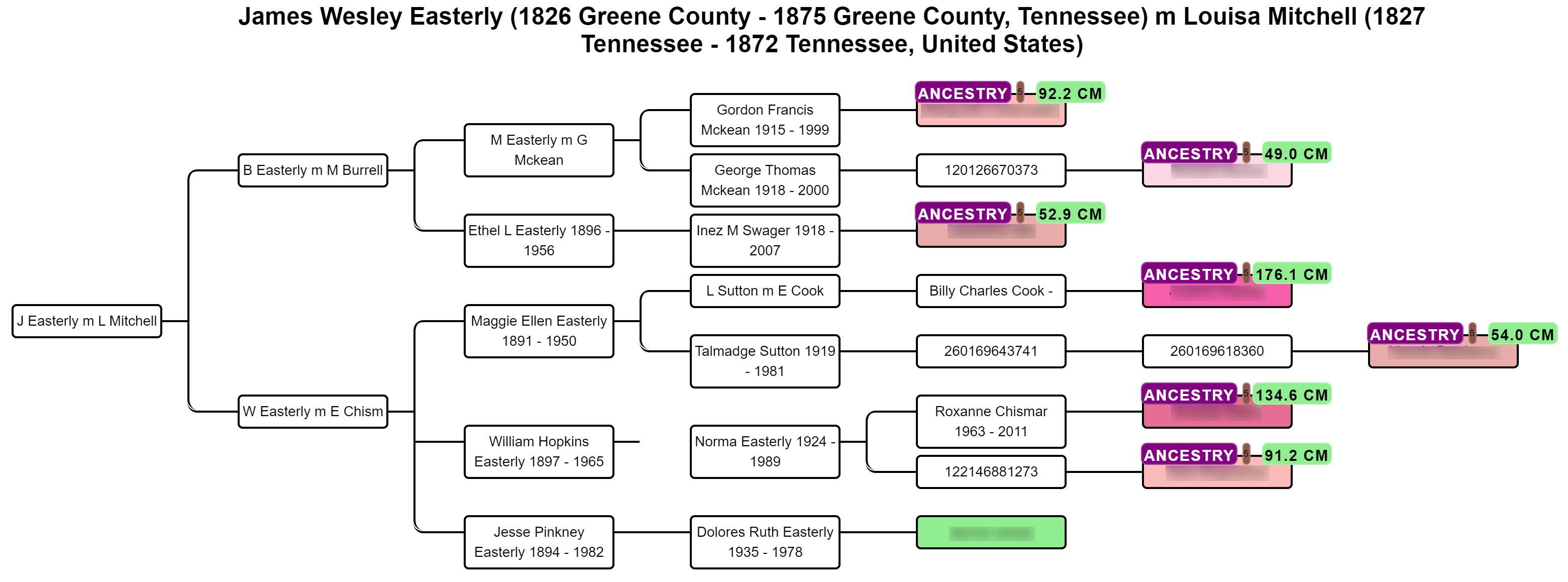 Another example of a reconstructed tree by AutoTree. In the example tree, the descendants of James Wesley Easterly (1826-1875) are shown.
Another example of a reconstructed tree by AutoTree. In the example tree, the descendants of James Wesley Easterly (1826-1875) are shown.
In addition to the public linked trees, the following tree data is used to identify common ancestors:
In some cases, a DNA match is not linked to a tree but one or more unlinked trees are available for the account linked to the DNA match.
If an Ancestry subscription is available, AutoTree will also be able to use unlinked trees.
These unlinked trees may contain some clues concerning common ancestors, for instance, if the concerned DNA match is actually linked to one of the persons in an unlinked tree.
The ThruLines predictions are retrieved
to supplement the existing trees.
These are only available if a tree has been linked to the DNA profile on Ancestry.
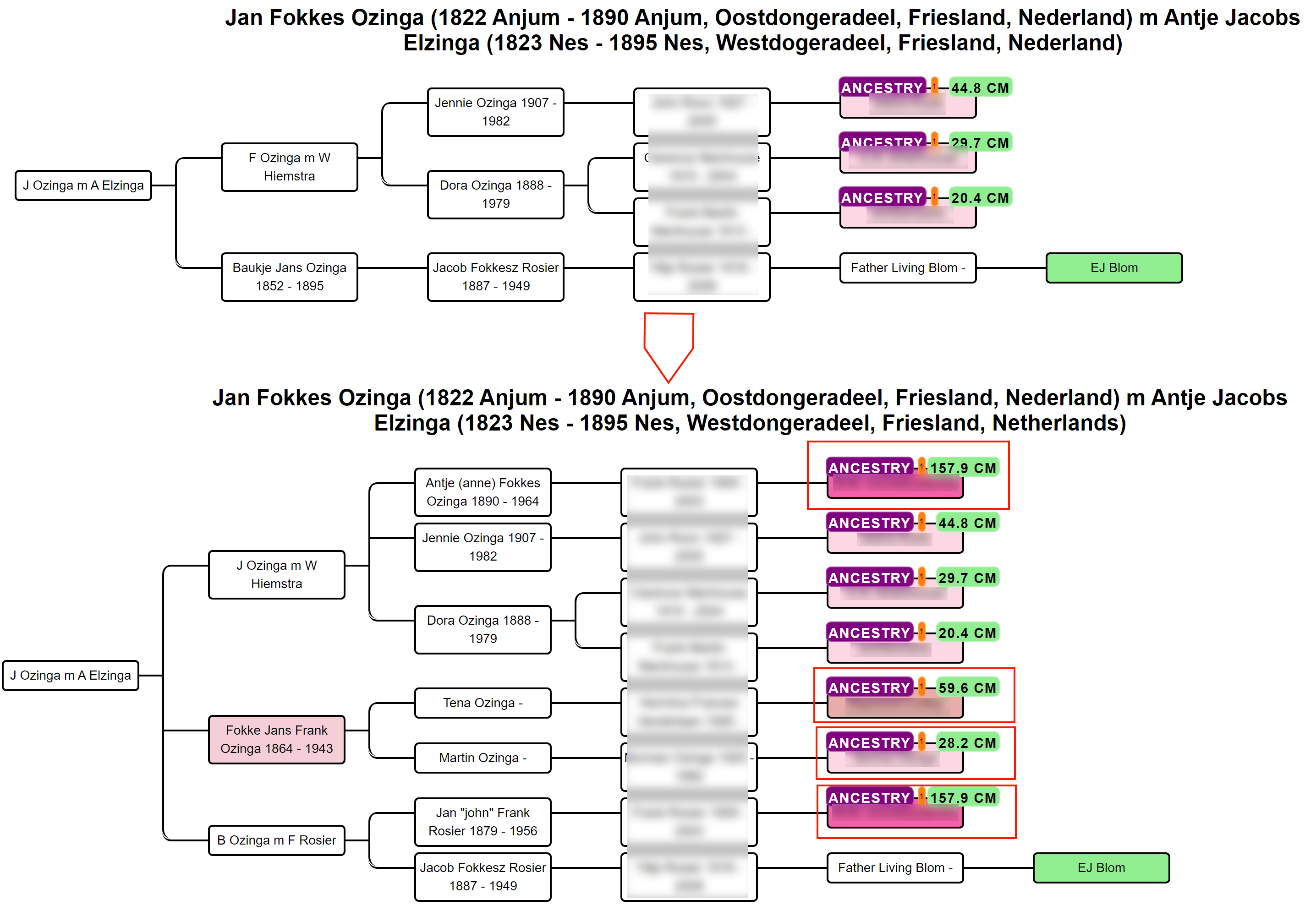 In these two reconstructed trees, the top one shows a default AutoTree analysis, underneath the same analysis that was performed after the integration of ThruLines predictions.
In these two reconstructed trees, the top one shows a default AutoTree analysis, underneath the same analysis that was performed after the integration of ThruLines predictions.
The alternative tree option allows you to force the AutoTree feature
to use a certain tree person, for instance from a quick and dirty tree that you have created yourself.
This scenario can be useful when the DNA match does not have a tree or an incomplete tree.
You can link a DNA match to a specific tree person by adding a special note, see the
manual for more information.
To distinguish between the different tree types, different colors are used.
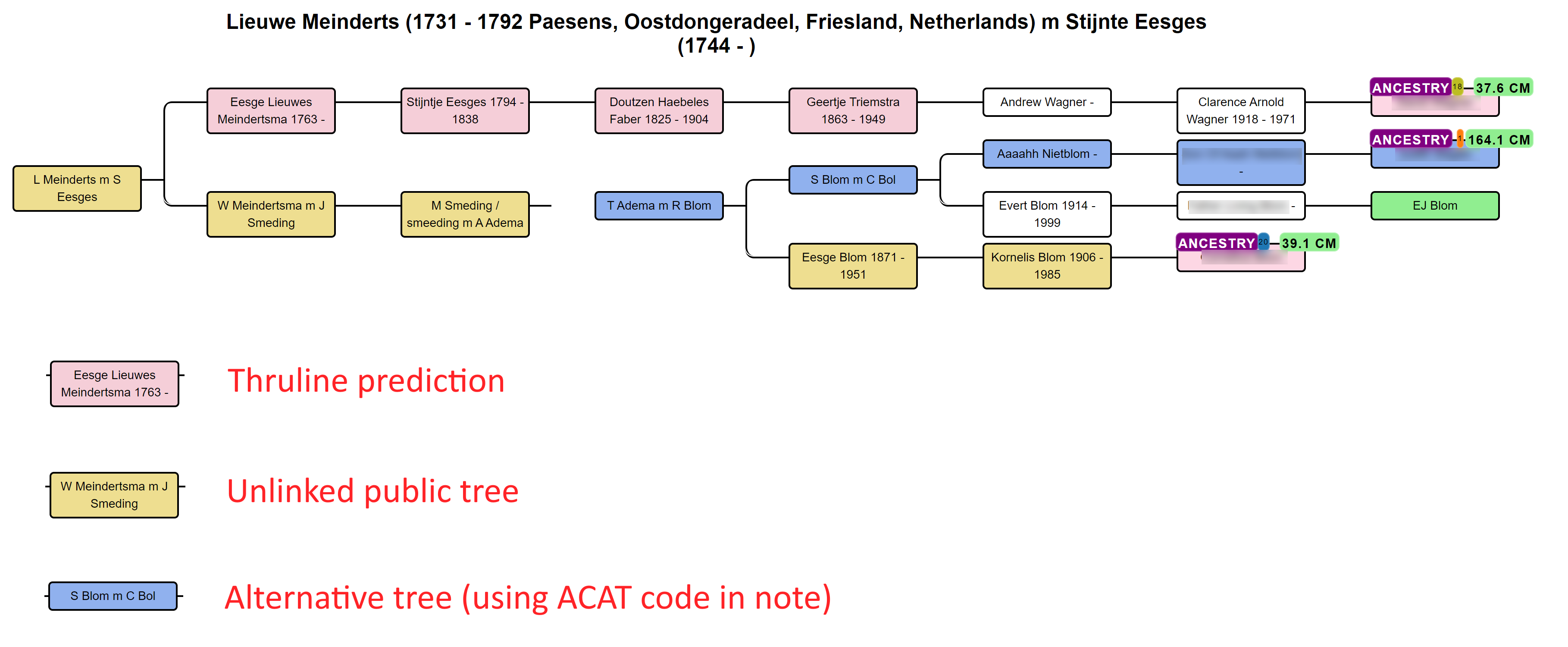 Ordinary tree persons are white, ThruLine predictions are pink, unlinked trees are orange/yellow and alternative tree persons are blue.
Ordinary tree persons are white, ThruLine predictions are pink, unlinked trees are orange/yellow and alternative tree persons are blue.
If a tree is linked to the tested profile (for instance a tree on Ancestry or FTDNA), a visualization of common ancestors superimposed on your ancestors is created.

This visualization is provided for several generations of the ancestral tree.

The number of DNA matches that share a common ancestor with your tree is displayed in the green clickable badge. After clicking on such a link,
all DNA matches that have been predicted to be linked to this particular ancestor are displayed (for instance descendants for ancestor Phoebe Lee 1815-1877).
Also, the cluster membership information of the linked DNA matches is also visualized in the orange badge.
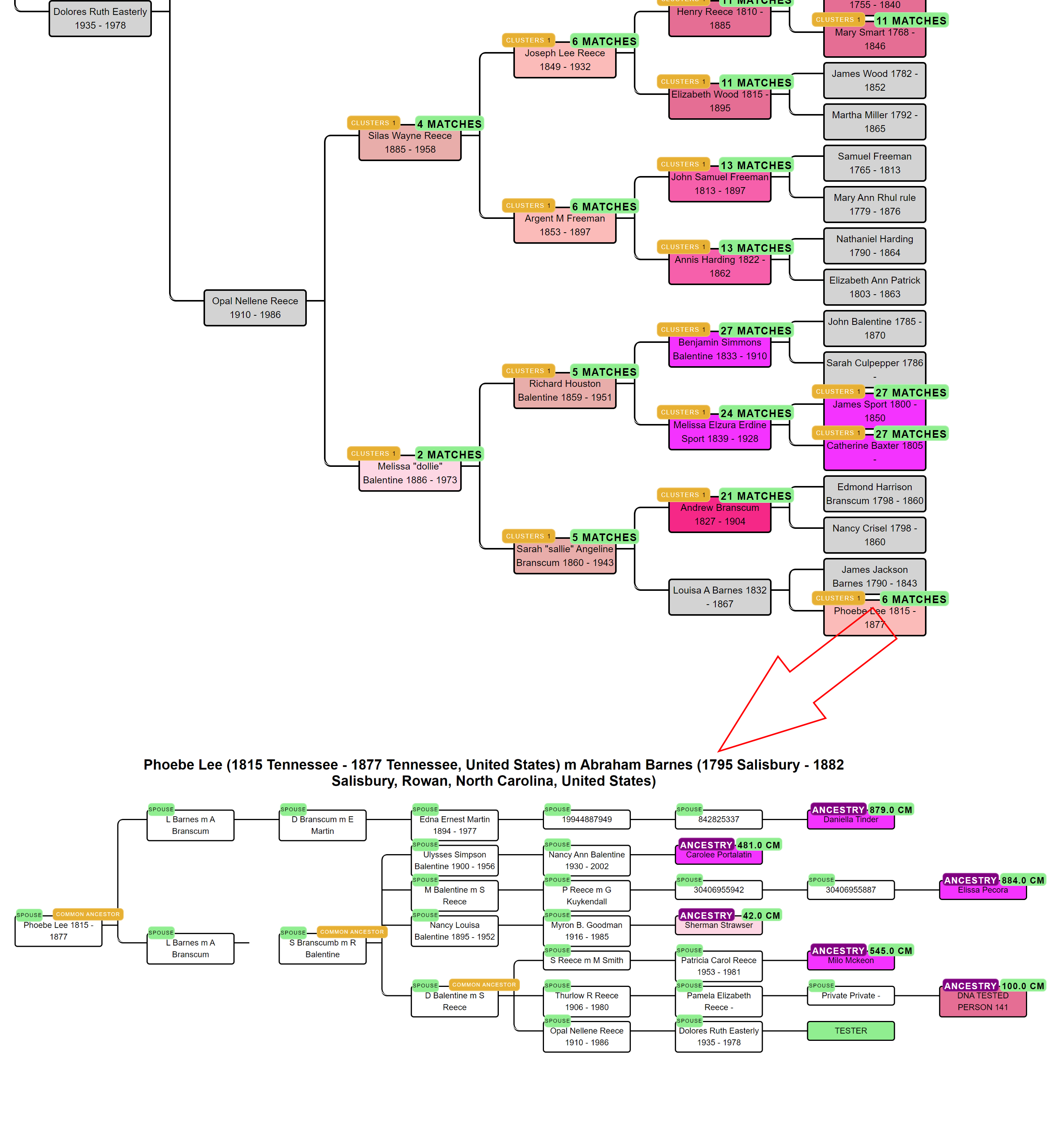
Moreover, all generated trees are available in the GEDCOM format.
This allows you to load the subsequent tree in other editors (for instance on Ancestry) and refine or extend the trees from there.
Common ancestors that are identified between DNA matches are also visualized in the AutoCluster chart using Christmas trees. A mouse overlay will show wich common ancestor has been identified.
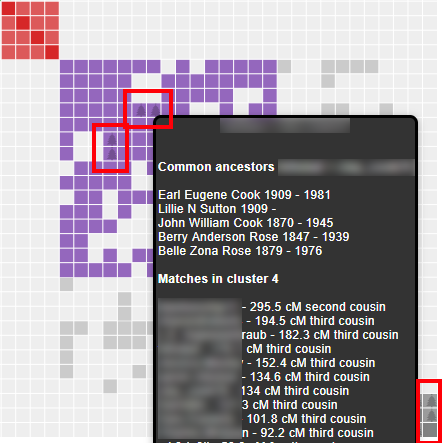
The overview of AutoTree analysis is displayed in the main AutoCluster HTML file in a table. For each AutoCluster cluster, the number of common ancestors,
common locations (for two distances) and common surnames are shown in the main AutoCluster HTML file. The fields of the tree, common ancestor and common location are clickable
and will show a page with more detailed information.

The complete list of common ancestor clusters with information regarding the underlying tree persons, their spouses,
descendants, and linked DNA matches is available in the separate common ancestors' tables (as well as an Excel file).

Using the birth location information from tree persons, we calculate location clusters using a minimum location distance. These clusters are available using the common location table which contains the location,
linked tree, linked DNA match and the tree persons that link to this location.
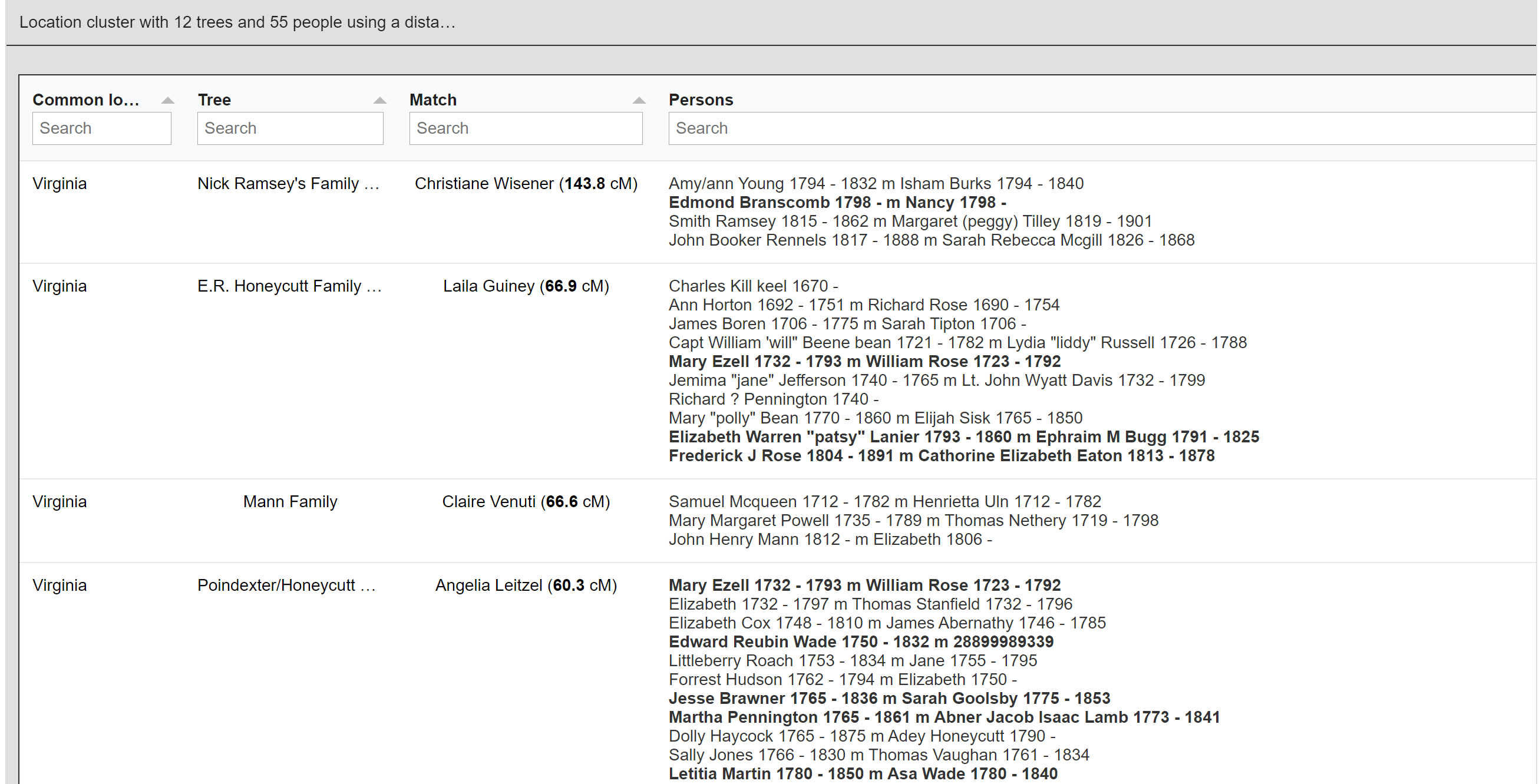
To invoke the AutoTree analysis, go to the websites view on our member's page and select the AutoTree for the profile of interest: 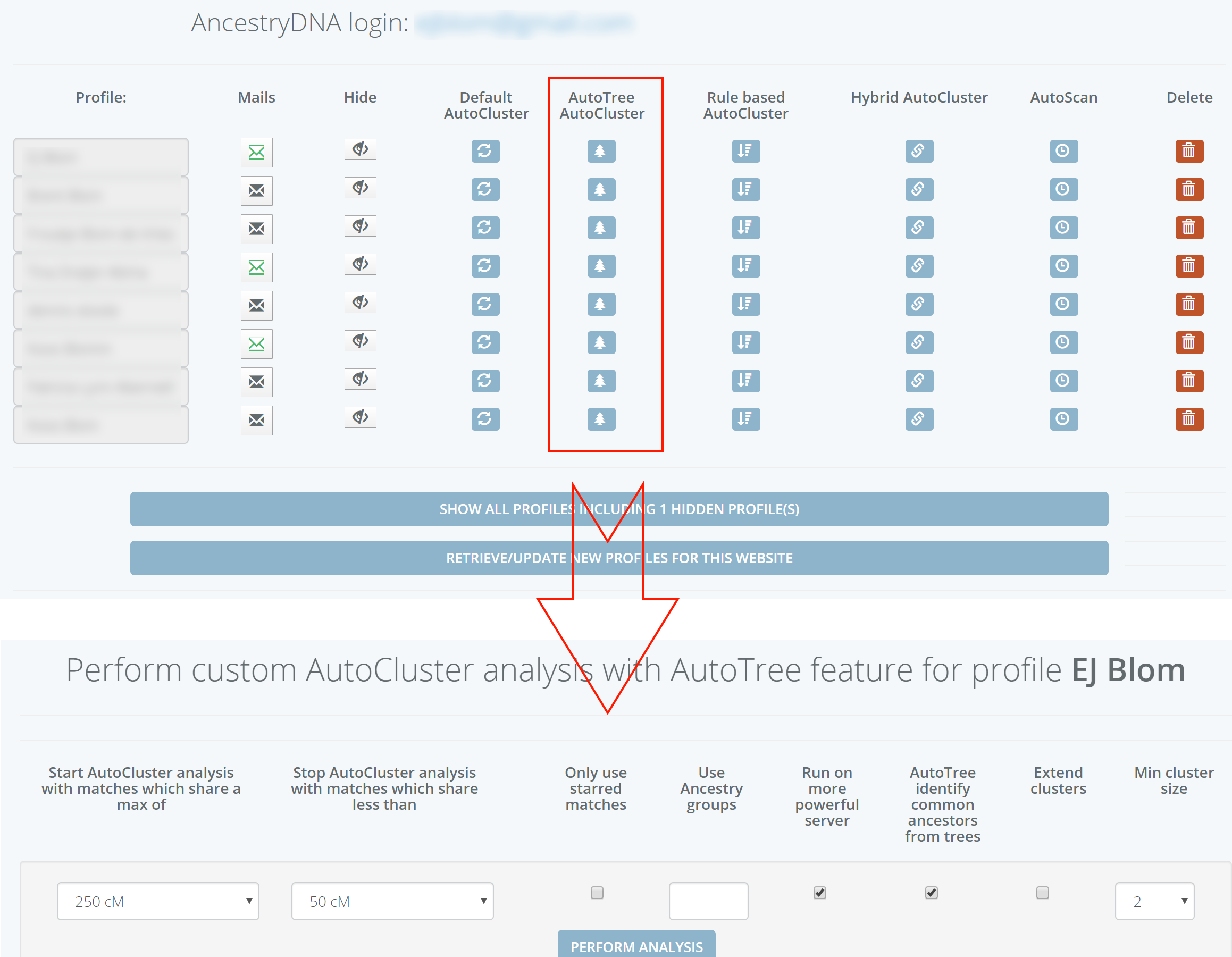
Last, some blog posts are available that cover the AutoTree feature:
Also, see our manual for more information.
We also have a Facebook user-group that offers support from many experienced users and where
interesting use cases are discussed.
Good luck with your genetic genealogy journey!
Best regards,
Evert-Jan Blom
Terms of Service & Privacy Policy
& Website & Member login & Facebook & Unsubscribe to our newsletter
''
|